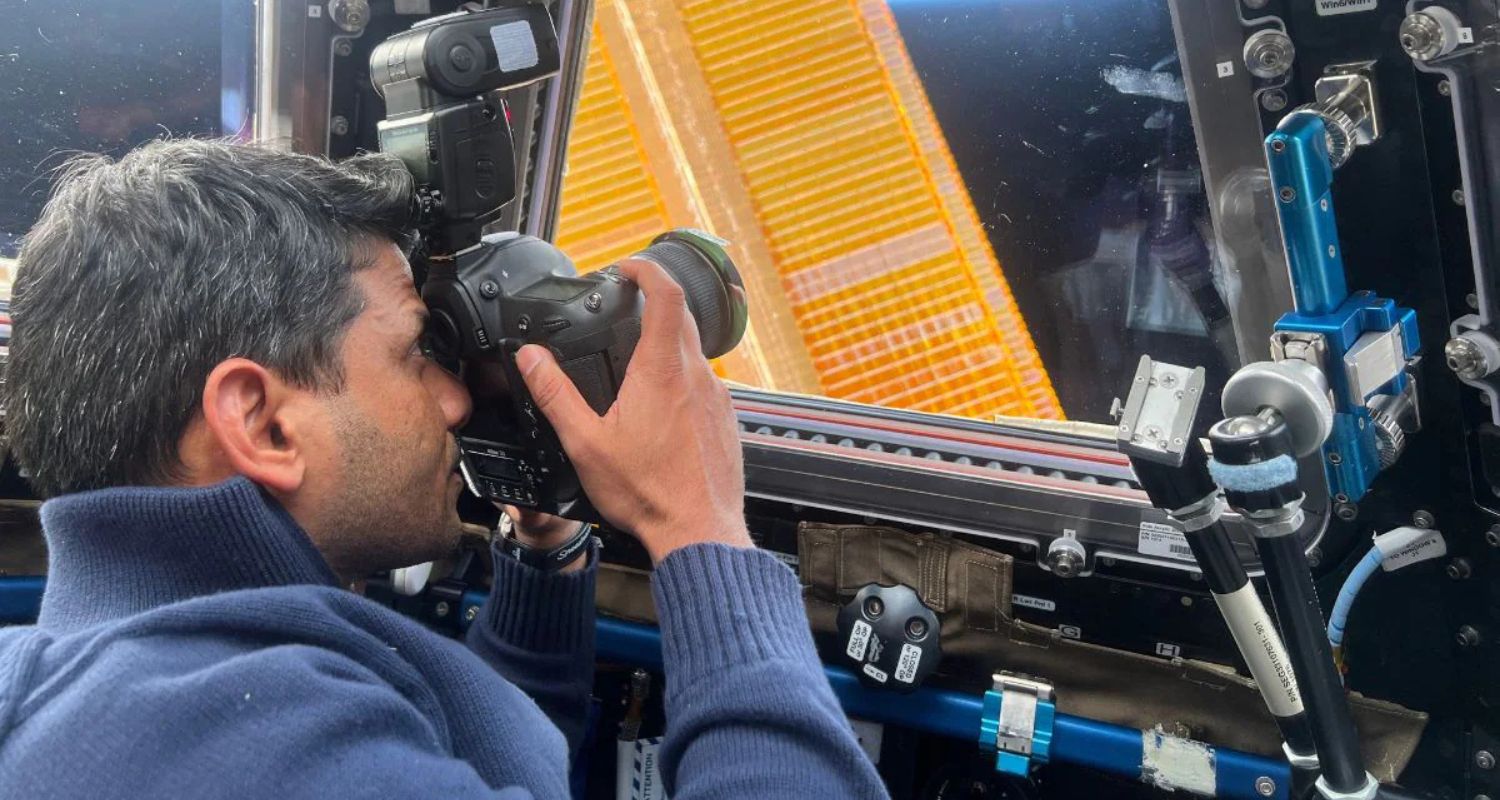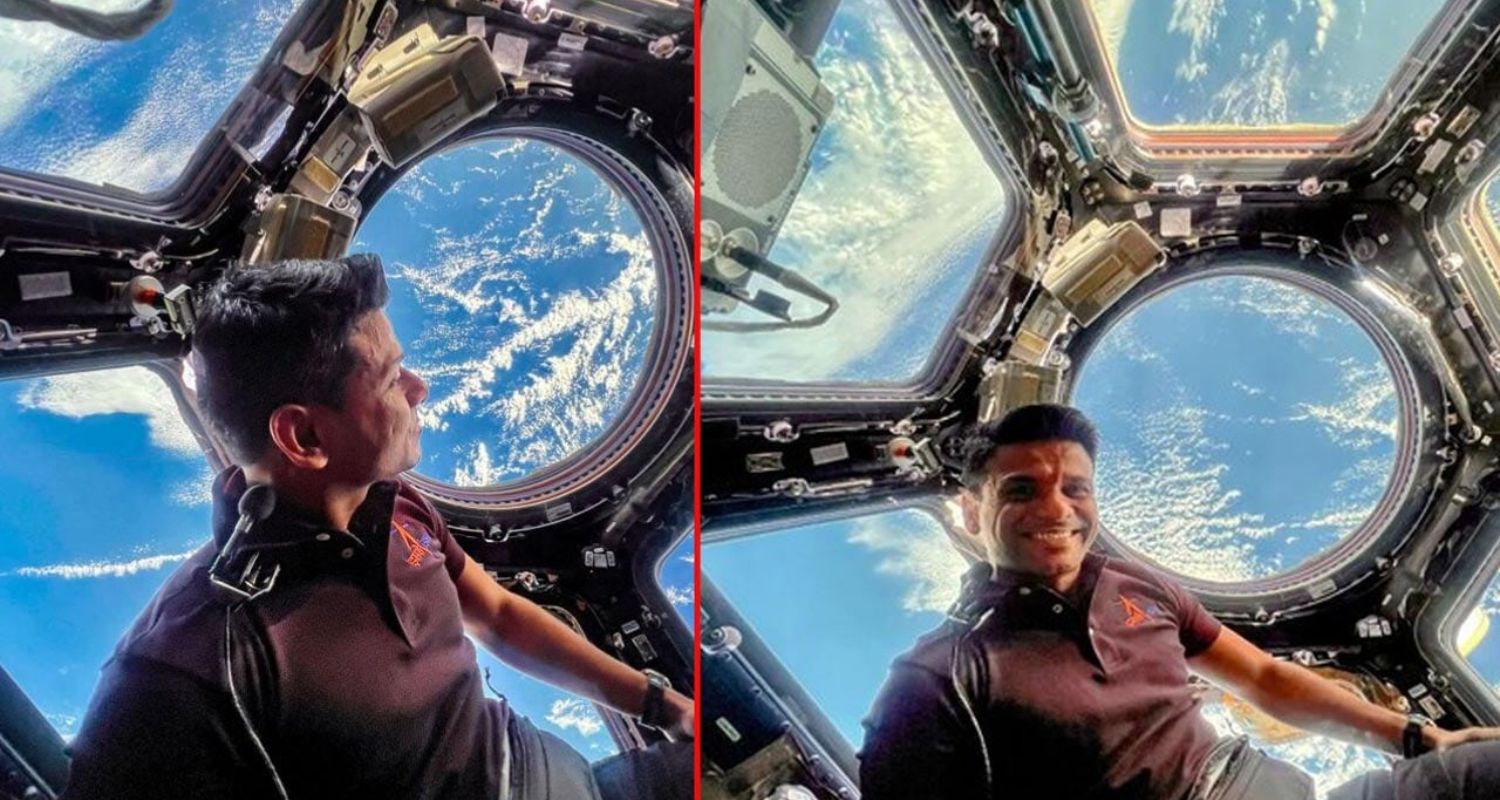Smiling, healthy, and visibly moved by the view of Earth from orbit, Group Captain Shubhanshu Shukla—India’s very own Gaganyatri—was recently seen gazing out of the iconic cupola window aboard the International Space Station (ISS). The striking image, though not officially released by ISRO yet, captures the essence of India’s first human presence aboard the ISS.
Group Captain Shukla arrived at the ISS on June 26 as part of a 14-day space mission with Axiom Space. The mission crew includes veteran astronaut and commander Peggy Whitson, pilot Shubhanshu “Shux” Shukla, and mission specialists Slawosz “Suave” Uznanski-Wisniewski and Tibor Kapu. Axiom on Sunday confirmed that the team has now completed nine highly productive days aboard the ISS.
Since their arrival in International Space Station, the crew has immersed themselves in a packed schedule of scientific research, technology demonstrations, and outreach efforts, steadily advancing their mission goals. Each activity contributes to vital experiments that aim to revolutionize space exploration and deliver benefits back on Earth.

During a virtual interaction with Prime Minister Narendra Modi, Group Captain Shukla shared his initial reflections from space. “From here, you don’t see any borders. The Earth looks united,” he said. He further describing that the profound perspective shift that comes with orbiting the planet. He also noted how vast India appears from space, far more expansive than on a map, reinforcing a powerful sense of unity and shared humanity.
Interestingly, while the public awaits images of Group Captain Shukla inside the cupola viewing India from above, the Indian Space Research Organisation (ISRO) has yet to release any visuals of this historic moment. Similarly, no footage has been released from Shukla’s outreach sessions with students across India.
On July 3 and 4, Group Captain Shukla engaged in inspiring live interactions with schoolchildren in Thiruvananthapuram, Bengaluru, and his alma mater, City Montessori School in Lucknow. Over 500 students connected directly with him from space, in what many described as heartwarming and historic moments. However, ISRO’s Human Space Flight Centre (HSFC) has yet to release video recordings of these sessions, even as anticipation builds across the country.
In a delayed statement, ISRO said it aims to "stoke curiosity of younger minds" through such student outreach programmes, especially in conjunction with India’s first human mission to the ISS.

These outreach initiatives are not merely scheduled formal programs; rather, they are intensely intimate, sincere events meant to ignite a passion in the hearts of young Indians. Through each engagement, ISRO is attempting to inspire children—to help them see themselves as future scientists, engineers, and even astronauts—rather than merely educating them. It's about sowing a seed of wonder that might eventually blossom into a life devoted to discovering the unknown.
All of this is a part of India's broader vision of Viksit Bharat, a developed and empowered country run by the upcoming generation of explorers, innovators, and thinkers. And there is genuine excitement. Millions of Indians are eagerly awaiting the moments when Group Captain Shubhanshu Shukla, floating hundreds of kilometres above Earth, shares his journey with schoolchildren in their living rooms and classrooms. Even though they haven't been made public yet, these moments are anticipated to make a lasting impression, particularly on students who might now feel more than ever that becoming a Gaganyatri is possible.
Meanwhile, Shukla’s days aboard the International Space Station have been anything but idle. Axiom Space outlined his key scientific contributions, each one a step toward solving challenges humanity may face in deep space.
- Myogenesis Investigation: In this project, Shukla studied how microgravity accelerates muscle loss—a critical concern for long-term space missions. His observations focused on the cellular and molecular changes in muscle tissue, with the ultimate goal of finding ways to protect astronauts’ physical health during extended stays in space.
- Space Micro Algae Experiment: Tiny as they are, microalgae may hold the key to sustainable life in space. Shukla handled these samples carefully, understanding their potential to provide food, oxygen, and even fuel on future missions far from Earth.
- Sprouts Project: Holding a packet of seeds, Shukla became part of a pioneering agricultural experiment. He watered the seeds to study how plants germinate and grow in microgravity. These same seeds will later be cultivated on Earth across multiple generations, helping scientists explore how space affects genetic traits, nutrition, and microbial communities—crucial insights for growing food on other planets.
- STEM Demonstration: Not forgetting the dreamers back home, Shukla recorded a hands-on science lesson to show how basic physical and chemical changes behave differently in space. From mixing substances to observing gas releases and heat generation, the demonstration was designed to make science feel alive and exciting—even in zero gravity.
The experiment showcased how basic processes like mixing, heating, and gas formation behave differently without gravity. During his 18-minute interaction with PM Modi, Group Captain Shukla said, “Bharat looks bhavya” (India looks magnificent). The comment evoked memories of India’s first man in space, Wing Commander Rakesh Sharma, who famously told then Prime Minister Indira Gandhi in 1984, “Saare Jahan Se Achha.”
With only a few days remaining in the mission, Group Captain Shukla continues to be a symbol of India’s growing presence in space. His journey not only adds a new chapter to India’s space legacy but also inspires an entire generation to dream beyond borders—just as he now sees Earth: united, boundless, and full of promise.
Also Read: Shubhanshu Shukla completes 1 week in space, speaks with family



